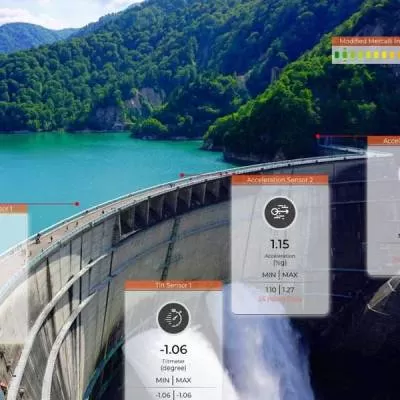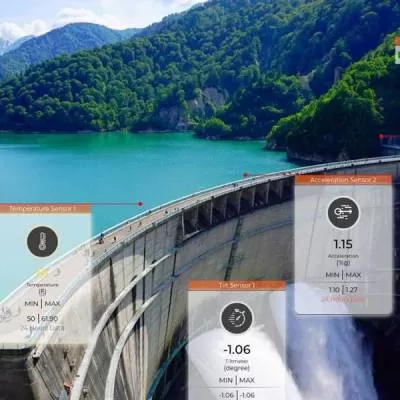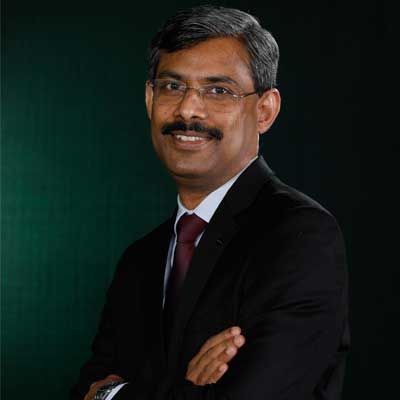- Home
- Technology
- The game changers
The game changers
The construction industry in India has come a long way over the last 15 years in terms of size and the sophistication of building projects and with it arises the need for more advanced techniques, procedures, systems, materials and equipment to serve this aspect of the changing market. Moreover clients in India are becoming much more demanding in terms of quality, speed of construction, and commitment to safe worksites and fair treatment of labour, which, in turn, drive change (innovation) in the industry in India. The construction market has started embracing innovations in construction technology, question conventional approach and focus on improving the delivery methods. Industry has started to accept and promote many innovative methods, practices, systems, processes, materials, equipment, and training methodologies, but there still exist many more opportunities. Every innovation is subject to acceptance or rejection review, a cost-benefit analysis and is measured against tangible benefit to the stakeholders. Some of these innovations listed below have provided a positive, measurable outcome, that are accepted for replication within the industry.
The outcome of some of these has contributed to the following:
- Improved efficiency
- Improved delivery process
- Overcoming project challenges
- Enhanced company´s reputation
- Improvement in the company´s profitability.
Some of these innovations that have been implemented and widely accepted by mature construction markets are listed below. But the adoption levels in India are low to medium. With challenging times for the Indian construction industry in 2013-14, I would like to give an overview of the same and urge the respective stakeholders to investigate how these can be implemented on a larger scale to enable India to sustain the economic slowdown and transform into a mature construction market.
High capacity Equipment: Demand for high capacity equipment from sectors like road, ports, airports, high-rise buildings has led to the entry of many equipment manufacturers with advanced machines to meet the demands of the sector. Some of the examples are tower cranes, luffing cranes, mobile cranes, men and material hoists, road layers and excavators. International companies have also set-up factories in India for production and export.
Methods and Practices: While there are a lot of opportunities available, the progress in implementing innovative methods and practices in public as well as private sectors needs a big push. Most of the multinational construction companies and some of the top Indian companies are bringing in international quality and safety standards by implementing already proven methods. These efforts will slowly bring in the much required improvement to these two key areas of execution. Some innovations that have impacted the Indian market are listed below:
- Formwork: In recent times, we have witnessed innovation in formwork techno¡logy. With methods like mascon and MFE formwork technology (Mivan), companies like Paschal, Peri, and Doka have brought in a lot of innovative products that have contributed well to the industry. The acceptance levels are increasing, and many local companies are also making indigenous formwork products that can reduce import costs. But overall, the acceptance levels are high and must continue further.
- Lean: Lean construction methods are one of the best practices implemented by the mature construction markets on many projects. The core idea is to maximise customer value while minimising waste. Lean construction practices and techniques bring efficiency to the projects, eliminate redundancy and waste, enhance collaboration and improve project outcomes and reduce cost. Conscious efforts must be made at all levels to implement the practices and the team must be trained at all levels. This would substantially reduce the project costs and benefit the end-user. The Mckinsey Infrastructure Practice Report of January 2013 reports an opportunity to save $1 trillion annual savings from a 60 per cent improvement in infrastructure productivity. Lean construction helps promote value stream mapping and sustainable construction.
- BIM- A game-changing technology: Increased adoption of Building Information Modelling software during the design stage leads to increased efficiency in the construction industry, right before a single brick is laid. BIM helps avoid rework, clash detection, budgeting and scheduling at early stages of the project. The project team is able to map the project against various trades and identify problems at the early stage, which then is corrected prior to starting works on site. This has an immediate application on all types of buildings but significantly on projects such as hospitals, hotels, high-rise buildings, malls, township projects, which present intense coordination challenges. It is interesting to note that many Indian software companies have been working on BIM for clients and projects in the US and Europe for the last 10 years, but have not applied it to major projects in India in a significant manner. I would expect 2013-14 to witness positive deployment of BIM on all major projects and improve efficiency at design and construction as more architects, structural and MEP consultants are building in-house capacity on BIM.
- Materials: It is quite evident that some industrial by-products were used as cement substitutes. These include slag from iron industry, fly-ash from thermal power plants, latex from rubber industry, etc. Some the other innovations that can be seriously investigated and adopted are:
- Form blocks and reinforced blockwork could be an option for low-rise buildings. -Use of couplers in reinforcement bars of high-rise buildings and reduce rebar congestion.
- Prefabricated building components such as slabs, walls. Prevalent tax structure and availability of land close to site for mass production has been a deterrent to promote this on a large scale, but is still worth pursuing.
- Fibre reinforced polymers for repair and strengthening of concrete structures.
- Industry-university connect: The industry-university link, which is missing now, must be addressed in order to ensure that graduates are groomed and ready for the industry. This is currently lacking in Indian universities. HR managers in most construction companies feel that graduate engineering students are not yet ready for the industry when hired. There is a disconnect between schools and the industry. Driving the change are corporate needs in an emerging market. Turner has been a pioneer in improving this interface in the US and is committed to improving the situation in India as well.
- Industry interface is an important part of the curricula. There is greater emphasis on - 'thinking' - how to think critically and make logical arguments using deductive, inductive, causative, or analogical reasoning, focus from knowing to doing. The novel internship programme offered by many colleges like IITs and NITs serve this purpose. The Foundation of Innovation and Technology Transfer, IIT-Delhi, hosts internship programmes in engineering, innovation and design. National Skills Development Corporation is a Government of India initiative, a PPP between the Central Government and industry bodies, whose objective is to provide more skills-based courses to supplement traditional curricula especially in the unorganised sector. These initiatives need to be incorporated in every school´s curricula and on a larger scale to bridge the current industry gaps.
Systems and Processes: The Indian construction industry needs to embrace the concept of project management and construction management systems from the initial stages of the project. In order to achieve this, clients must employ the services of experienced international project management consultants (PMCs) from day one to achieve this.
PMCs have been successful in implementing effective systems, tools, processes and controls for managing the projects. Various checks and balances are imposed at regular intervals. An external agency performing this function contributes to out-of-the box thinking, which the in-house team of clients may not necessarily possess. Thinking ahead, resolving potential coordination conflicts, scheduling and cost control are the key benefits of employing the right PMCs on projects.While innovations in materials, equipment, systems and processes can bring positive changes on one hand, it is also necessary to bring changes to contract systems by moving away from the conventional
item-rate, re-measurable type of contract to more mature forms such as lumpsum, cost-plus, guaranteed maximum price type. This will eliminate the need of an army of estimators from the client and contractor teams painfully re-measuring the executed works on site for payment certification. This process not only delays the payment but also the project substantially. It´s about time that India changes this in 2013-14. Turner´s commitment to innovation: Turner holds innovation as the key to future construction practices and has a strong commitment from senior management. Special emphasis has been laid on imparting lean, BIM, formwork and alternative material practices. Turner has executed projects utilising these concepts successfully in international markets and is committed to implementing these innovations in India. Having identified ´Innovation´ as the key differentiator and to encourage innovation and ideas, the company has established an ´Innovation Award´ for its employees. Every year, Turner rewards its employees with prize money for the best contribution, based on certain parameters.
The Indian construction market is poised for a major leap with complex buildings such as high-rise towers, large span structures and monumental landmarks in the pipeline. Innovations such as BIM, Lean, improvements in the disciplined application of safety and quality procedures, and the use of project management systems will transform the industry and bring in the much-needed change. Out-of-the-box thinking is the need of the hour and embracing innovation in an incremental manner will rapidly improve the Indian construction market and deliver good quality and safe buildings with ever-lasting impact for future generations.
About the author:
Jairam Panch, Managing Director, Turner Project Management India, has an overall work experience of 23 years in both domestic and international markets. He has worked on challenging project segments including the Burj Dubai development. In India, he is currently managing projects of construction volume worth approximately Rs 4,500 crore.
JAIRAM PANCH dilates on the efficiencies that have been introduced to the Indian construction industry through technological innovation. The construction industry in India has come a long way over the last 15 years in terms of size and the sophistication of building projects and with it arises the need for more advanced techniques, procedures, systems, materials and equipment to serve this aspect of the changing market. Moreover clients in India are becoming much more demanding in terms of quality, speed of construction, and commitment to safe worksites and fair treatment of labour, which, in turn, drive change (innovation) in the industry in India. The construction market has started embracing innovations in construction technology, question conventional approach and focus on improving the delivery methods. Industry has started to accept and promote many innovative methods, practices, systems, processes, materials, equipment, and training methodologies, but there still exist many more opportunities. Every innovation is subject to acceptance or rejection review, a cost-benefit analysis and is measured against tangible benefit to the stakeholders. Some of these innovations listed below have provided a positive, measurable outcome, that are accepted for replication within the industry. The outcome of some of these has contributed to the following: Improved efficiency Improved delivery process Overcoming project challenges Enhanced company´s reputation Improvement in the company´s profitability. Some of these innovations that have been implemented and widely accepted by mature construction markets are listed below. But the adoption levels in India are low to medium. With challenging times for the Indian construction industry in 2013-14, I would like to give an overview of the same and urge the respective stakeholders to investigate how these can be implemented on a larger scale to enable India to sustain the economic slowdown and transform into a mature construction market. High capacity Equipment: Demand for high capacity equipment from sectors like road, ports, airports, high-rise buildings has led to the entry of many equipment manufacturers with advanced machines to meet the demands of the sector. Some of the examples are tower cranes, luffing cranes, mobile cranes, men and material hoists, road layers and excavators. International companies have also set-up factories in India for production and export. Methods and Practices: While there are a lot of opportunities available, the progress in implementing innovative methods and practices in public as well as private sectors needs a big push. Most of the multinational construction companies and some of the top Indian companies are bringing in international quality and safety standards by implementing already proven methods. These efforts will slowly bring in the much required improvement to these two key areas of execution. Some innovations that have impacted the Indian market are listed below: Formwork: In recent times, we have witnessed innovation in formwork techno¡logy. With methods like mascon and MFE formwork technology (Mivan), companies like Paschal, Peri, and Doka have brought in a lot of innovative products that have contributed well to the industry. The acceptance levels are increasing, and many local companies are also making indigenous formwork products that can reduce import costs. But overall, the acceptance levels are high and must continue further. Lean: Lean construction methods are one of the best practices implemented by the mature construction markets on many projects. The core idea is to maximise customer value while minimising waste. Lean construction practices and techniques bring efficiency to the projects, eliminate redundancy and waste, enhance collaboration and improve project outcomes and reduce cost. Conscious efforts must be made at all levels to implement the practices and the team must be trained at all levels. This would substantially reduce the project costs and benefit the end-user. The Mckinsey Infrastructure Practice Report of January 2013 reports an opportunity to save $1 trillion annual savings from a 60 per cent improvement in infrastructure productivity. Lean construction helps promote value stream mapping and sustainable construction. BIM- A game-changing technology: Increased adoption of Building Information Modelling software during the design stage leads to increased efficiency in the construction industry, right before a single brick is laid. BIM helps avoid rework, clash detection, budgeting and scheduling at early stages of the project. The project team is able to map the project against various trades and identify problems at the early stage, which then is corrected prior to starting works on site. This has an immediate application on all types of buildings but significantly on projects such as hospitals, hotels, high-rise buildings, malls, township projects, which present intense coordination challenges. It is interesting to note that many Indian software companies have been working on BIM for clients and projects in the US and Europe for the last 10 years, but have not applied it to major projects in India in a significant manner. I would expect 2013-14 to witness positive deployment of BIM on all major projects and improve efficiency at design and construction as more architects, structural and MEP consultants are building in-house capacity on BIM. Materials: It is quite evident that some industrial by-products were used as cement substitutes. These include slag from iron industry, fly-ash from thermal power plants, latex from rubber industry, etc. Some the other innovations that can be seriously investigated and adopted are:- Install gypsum board partitions in hotels and office buildings replacing block work to reduce dead load and also expedite construction. Reduces 20 per cent time and is less labour intensive. - Form blocks and reinforced blockwork could be an option for low-rise buildings. -Use of couplers in reinforcement bars of high-rise buildings and reduce rebar congestion. - Prefabricated building components such as slabs, walls. Prevalent tax structure and availability of land close to site for mass production has been a deterrent to promote this on a large scale, but is still worth pursuing. - Fibre reinforced polymers for repair and strengthening of concrete structures. Industry-university connect: The industry-university link, which is missing now, must be addressed in order to ensure that graduates are groomed and ready for the industry. This is currently lacking in Indian universities. HR managers in most construction companies feel that graduate engineering students are not yet ready for the industry when hired. There is a disconnect between schools and the industry. Driving the change are corporate needs in an emerging market. Turner has been a pioneer in improving this interface in the US and is committed to improving the situation in India as well. Industry interface is an important part of the curricula. There is greater emphasis on - 'thinking' - how to think critically and make logical arguments using deductive, inductive, causative, or analogical reasoning, focus from knowing to doing. The novel internship programme offered by many colleges like IITs and NITs serve this purpose. The Foundation of Innovation and Technology Transfer, IIT-Delhi, hosts internship programmes in engineering, innovation and design. National Skills Development Corporation is a Government of India initiative, a PPP between the Central Government and industry bodies, whose objective is to provide more skills-based courses to supplement traditional curricula especially in the unorganised sector. These initiatives need to be incorporated in every school´s curricula and on a larger scale to bridge the current industry gaps. Systems and Processes: The Indian construction industry needs to embrace the concept of project management and construction management systems from the initial stages of the project. In order to achieve this, clients must employ the services of experienced international project management consultants (PMCs) from day one to achieve this. PMCs have been successful in implementing effective systems, tools, processes and controls for managing the projects. Various checks and balances are imposed at regular intervals. An external agency performing this function contributes to out-of-the box thinking, which the in-house team of clients may not necessarily possess. Thinking ahead, resolving potential coordination conflicts, scheduling and cost control are the key benefits of employing the right PMCs on projects.While innovations in materials, equipment, systems and processes can bring positive changes on one hand, it is also necessary to bring changes to contract systems by moving away from the conventional item-rate, re-measurable type of contract to more mature forms such as lumpsum, cost-plus, guaranteed maximum price type. This will eliminate the need of an army of estimators from the client and contractor teams painfully re-measuring the executed works on site for payment certification. This process not only delays the payment but also the project substantially. It´s about time that India changes this in 2013-14. Turner´s commitment to innovation: Turner holds innovation as the key to future construction practices and has a strong commitment from senior management. Special emphasis has been laid on imparting lean, BIM, formwork and alternative material practices. Turner has executed projects utilising these concepts successfully in international markets and is committed to implementing these innovations in India. Having identified ´Innovation´ as the key differentiator and to encourage innovation and ideas, the company has established an ´Innovation Award´ for its employees. Every year, Turner rewards its employees with prize money for the best contribution, based on certain parameters. The Indian construction market is poised for a major leap with complex buildings such as high-rise towers, large span structures and monumental landmarks in the pipeline. Innovations such as BIM, Lean, improvements in the disciplined application of safety and quality procedures, and the use of project management systems will transform the industry and bring in the much-needed change. Out-of-the-box thinking is the need of the hour and embracing innovation in an incremental manner will rapidly improve the Indian construction market and deliver good quality and safe buildings with ever-lasting impact for future generations. About the author: Jairam Panch, Managing Director, Turner Project Management India, has an overall work experience of 23 years in both domestic and international markets. He has worked on challenging project segments including the Burj Dubai development. In India, he is currently managing projects of construction volume worth approximately Rs 4,500 crore.























